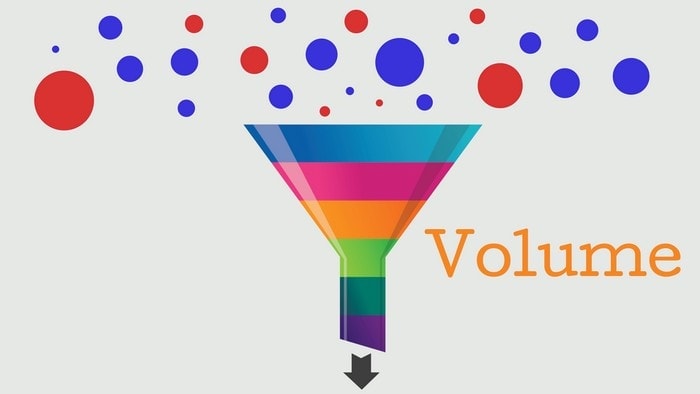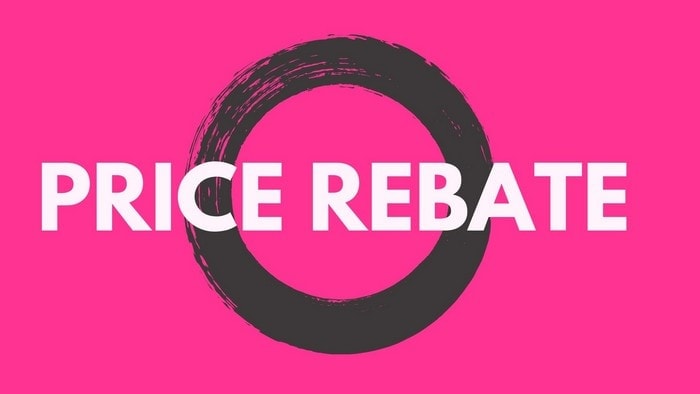Table of Contents
Definition of Price Rebate
Price rebate is defined as a return or partial return of purchase price to the customer by the seller. This returns usually defined on a specific value for the number of goods. In some cases, even a period is specified to avail the rebate.
The primary difference between rebate and discount is that rebate is given the post the payment of complete invoice amount and discount is deducted from the advance payment. It is classified as a type of sales promotions that companies use to increase the sales of their product.
It can also be seen as a refund that is given by the supplier to the buyer as a goodwill gesture and to increase the repeat purchase.
There are many terms and conditions associated with this price rebate it includes point of a specific quantity or payment within specified credit terms or a combination of both. Price rebate is allowed only when the purchases made by the customers, cross a predefined limit after purchase or satisfy other terms of the buyer.
How does price rebate work?
Price rebate functions after the full payment of the invoice by the customer. To qualify for the price rebate, the seller expects the buyer to fulfill certain terms and conditions which are predefined before the transaction of the sale is made.
There are many varieties of rebates which are implemented by companies. Following is an example which can be used to explain the functioning of the price rebate:
Consider that a packet of m & m’s cost $10. The buyer has a price rebate of 10% on the purchase of 10 m & m’s.
In this case, the customer is expected to buy ten packets of m & m’s and pathy $100. After the payment of $100, the customer will be eligible to receive a 10% rebate on the entire amount, which will be $10.
With this, the customer can either purchase another packet of m & m or take the cash. In this case, the price rebate is dependent on the quantity of the products purchased.
Some stores may have a scheme that says the additional $10 will be provided as a discount during next shopping — thereby combining rebate and discount.
In this case, the price rebate is dependent on the repeat purchase of the customer.
In some cases, the shopper is expected to buy anything but cross a limit set by the seller and then avail the rebate in terms of goods or on a subsequent transaction. In this case, the price repeat is dependent on the total value of the bill.
Price rebate in commonly in dominos and pizza hut. After the order is placed and the bill is generated, there is a link or URL or QR code which is at the bottom of the printed bill which asks the customers to fill in the survey about their experience in the shop and get a discount during their subsequent visit.
This way, the company can provide a price rebate and also collect direct user experience and customer feedback.
These days, digital payment methods have started to use this concept on a large scale. Payment gateways like paytm and phones have been using price rebate for a long time now.
The offer is provided on multiple payment options and buying options. For example, a cashback of 15% is provided on purchase of movie tickets booked through that app. The cashback is also a form a price rebate.
Best strategies for price rebates
Different products use different strategies to implement the price repeat strategy successfully. Implementation of strategy depends entirely upon the nature of the product nature of the business and the capacity of the customers. Following are a few of the strategies that are used for price rebates:
#1 Volume-based strategy:
In the case of volume based price rebates, the customer is asked to purchase a certain specified quantity of the product after which the customer is eligible for a specified price rebate. In this case, the customer is not eligible to buy any other product apart from the specified product in the specified quantity.
If the customer decides to buy a quantity which is much larger than the minimum requirement to be eligible for price rebate, then the customer can bargain for higher price rebate.
For example, Dominos pizza has an offer like on purchase of any three medium pizza’s; there would be a rebate in terms of free side order or a cold drink.
#2 Value-based strategy:
Value-based price rebate can be seen in almost every shopping center and convenience store. Major leaders like Walmart and Costco he was value-based in which the customers are expected to cross a certain be the amount after which they can get a specified price rebate.
In this case, unlike a volume-based price rebate strategy, the customers can buy any product in any quantity to qualify for the price rebate. The idea is only to cross the value of the entire bill amount.
In some cases, the price report is offered after the crossing of the value of the entire bill with taxes or in some cases without taxes.
For example, in Walmart, if the customer purchases goods worth $100 or above, there would a discount of 10% applicable. In this case, there would be no restriction on the type of goods which are purchased, but only the total amount should cross the amount of $100.
#3 Period based strategy:
In some cases, a price rebate is offered only when the payment terms are fulfilled in the specified time limit. This is applicable in case of bulk purchases which are made by resellers.
For example, reseller purchases 500 shirts of the arrow from the manufacturer and the price rebate that is offered to the reseller is if the entire payment is made within 90 days, then there will be a price rebate of 10% on the amount.
If the reseller successfully makes the payment within 30 days, he can always negotiate for a better price rebate.
#4 New customer strategy:
This strategy is used in online payments mode when a new customer signs up, then on the first purchase – which may or may not has a price limit – get a new customer rebate. This is to ensure that repeat purchases occur by the customer. New customer rebate ensures customer loyalty.
Difference between price rebate and discount:
As much as the terms discount and rebate seems to be used alternatively, both of them are different in many ways.
Following a few the difference between discount and rebate
A discount is a reduction that is given in the price for various reasons why is rebate is the amount which is refunded by the seller to the buyer after specified terms.
In terms of strategy, a discount is considered as a marketing strategy while rebate is considered as a sales promotional strategy of the organization.
The discount is provided before the payment is made of while rebate is provided only after making full payment and is available only to selected few customers on the other hand discount is applicable for all of the customers.
Liked this post? Check out the complete series on Sales



Loved this article.
I am grateful, I learnt